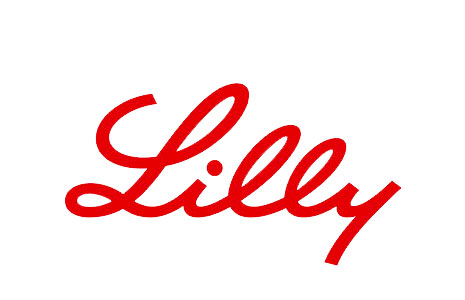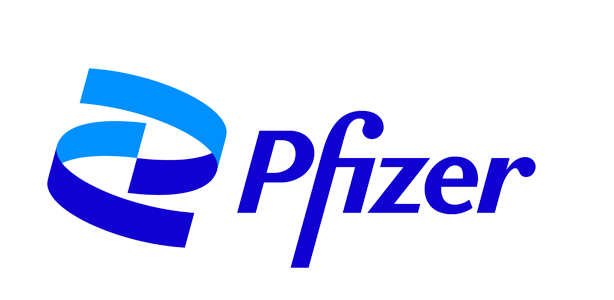 Despite being one of the top 10 causes of global disability-adjusted life-years in adolescents and second only to road injuries in those aged 10-24 years,1 childhood headache is under-evaluated around the world. Paediatric migraine is not just a ‘small version of adult migraine’, and it requires careful diagnosis and management strategies to meet the expectations not only of children and adolescents but also of their families, explains Dr Aynur Özge Professor of Neurology, Algology and Clinical Neurophysiology, Mersin University School of Medicine, Mersin, Turkey.
Despite being one of the top 10 causes of global disability-adjusted life-years in adolescents and second only to road injuries in those aged 10-24 years,1 childhood headache is under-evaluated around the world. Paediatric migraine is not just a ‘small version of adult migraine’, and it requires careful diagnosis and management strategies to meet the expectations not only of children and adolescents but also of their families, explains Dr Aynur Özge Professor of Neurology, Algology and Clinical Neurophysiology, Mersin University School of Medicine, Mersin, Turkey.
Investigating the pathophysiology and clinical features of primary headaches in children is essential, including the identification of any genetic and environmental factors, though the latter has a lower incidence than in adults. If migraine is diagnosed, treatment should not merely mirror that of adult headaches, and pharmacological and non-pharmacological therapies in children and adolescents should take account of the characteristics of the developing brain and any specific comorbidities.2
Management of chronic or refractory migraine in children and adolescents requires a holistic approach including education, realistic expectations, lifestyle advice, appropriate attack management (if necessary) and/or preventive medicine with or without bridge therapy. Medication overuse and comorbidities closely related to migraine need to be monitored, for example with headache diaries and additional methods such as encouraging patients to draw their headache attacks.1,3
The role of CGRP in paediatric migraine
Based on the current literature, it seems that substantial parts of the CGRP pathways are already developed and working in the preterm animal foetus.3,4 Newborn animals show high CGRP levels and high density of CGRP-positive neurons and nerve fibres.3,4 In human studies, increased levels of CGRP were observed in children and adolescents with migraine – as seen in adults. CGRP and PACAP-38 play an integral role in paediatric migraine and may work together in the pathogenesis of migraine in children.3,4
Recent studies suggest that CGRP pathways are highly developed in childhood and adolescence and these pathways might be important in paediatric migraine.3,4 In addition, plasma CGRP is a potential diagnostic biomarker for paediatric migraine and a potential candidate for monitoring the effect of novel preventive medication.5 Remedies based on influencing CGRP metabolism therefore merit attention in this age group.3,4 However, no published data on the use of CGRP ligand/receptor monoclonal antibodies (mAbs) or small molecule antagonists (gepants) are available in children and adolescents.2,3
Paediatric clinical trials of anti-CGRP therapies
Paediatric studies of the four CGRP mAbs and three gepants approved for migraine in adults have not yet been completed, so these agents are not approved for use in patients under the age of 18.
When prescribed ‘off-label’, paediatric dosing for mAbs is often extrapolated from adult dosing based on body surface area (BSA) or weight, and age. When dose is based on weight and age, younger children tend to have faster plasma clearance and thus lower plasma concentrations and peak concentrations. Paediatric pharmacokinetic studies showed that 1 mg/kg of IgG is only about 0.1-0.2% of the body’s IgG content, so mAbs used for migraine represent only a small fraction of the body’s total antibodies with half-lives ranging from 21 to 50 days.6
Recommendations of a special interest group of the American Headache Society for the use of CGRP ligand/receptor antibodies in children and adolescents under the age of 18 are presented in Table 1. 3,6
The current status of paediatric clinical trials of anti-CGRP therapies is summarised in Table 2. It should be noted that no data are available on the effect of CGRP or CGRP modifying drugs on age of puberty. After puberty, migraine-associated symptoms such as photo-phonophobia are often less severe than before puberty.3,6
Table 1. Suggested indications, contraindications, and monitoring for the use of CGRP mAbs in children and adolescents with migraine according to the American Headache Society6
| Indications |
|
| Contraindications |
|
| Monitoring |
|
Table 2. Current status of some studies with CGRP monoclonal antibodies in paediatric patients with migraine according to the EudraCT and ClinicalTrials.gov databases (Accessed December 27, 2022).
| The study Number | Title | Age | Status | Sponsor |
| 2018-004622-28 | A Randomized, Double-Blind, Placebo-Controlled Study of Galcanezumab in Adolescent Patients 12 to 17 years of age with Chronic Migraine – the REBUILD-2 Study | 12-17 | Recruiting | Eli Lilly and Company |
| 2017-004351-23 | A Randomized, Double-Blind, Placebo-Controlled Study of Galcanezumab in Patients 6 to 17 years of age with Episodic Migraine – the REBUILD-1 Study | 6-17 | Recruiting | Eli Lilly and Company |
| NCT03832998 | A Phase 3, Randomized, Double-blind, Placebo-controlled, Parallel-group Study to Evaluate the Efficacy and Safety of Erenumab in Children (6 to <12 years) and Adolescents (12 to <18 years) With Chronic Migraine (OASIS PEDIATRIC [CM]) | 6-18 | Recruiting | Amgen |
| NCT04530110 | A Multicenter, Open-Label Study Evaluating the Long-Term Safety, Tolerability, and Efficacy of Monthly Subcutaneous Administration of Fremanezumab for the Preventive Treatment of Episodic and Chronic Migraine in Pediatric Patients 6 to 17 years of age | 6-17 | Recruiting | Teva Branded Pharmaceutical Products R&D, Inc. |
| NCT04616326 | A Randomized, Double-Blind, Placebo-Controlled Study of Galcanezumab in Adolescent Patients 12 to 17 years of age with Chronic Migraine - the REBUILD-2 Study | 12-17 | Recruiting | Eli Lilly and Company |
| NCT04965675 | Interventional, Randomized, Double-blind, Parallel-group, Placebo-controlled Study to Evaluate the Efficacy and Safety of IV Eptinezumab in Adolescents (12 to 17 years) for the Preventive Treatment of Chronic Migraine | 12-17 | Recruiting | H. Lundbeck A/S |
| NCT05125302 | A Phase 3, Multicenter, Randomized, Double-blind, Placebo-controlled, Single-attack Study to Evaluate the Efficacy, Safety, Tolerability, and Pharmacokinetics of Oral Ubrogepant in the Acute Treatment of Migraine with or Without Aura in Children and Adolescents (ages 6 to 17 years) | 6-17 | Recruiting | AbbVie |
| 2021-005246-15 | A Phase 3, Randomized, Double-blind, Placebo-controlled Study to Evaluate the Efficacy and Safety of Rimegepant in Migraine Prevention in Children and Adolescents ≥6 to <18 years of age | 6-18 | Recruiting | Biohaven Pharmaceuticals Holding Company Limited |
| NCT04649242 | Phase 3, Multicenter, Randomized, Double-blind, Group Sequential, Placebo-controlled Study to Assess Efficacy and Safety of Rimegepant or the Treatment of Migraine (With or Without Aura) in Children and Adolescents ≥6 to <18 years of age | 6-18 | Recruiting | Biohaven Pharmaceuticals Holding Company Limited |
| NCT04743141 | Phase 3, Multicenter, Open-label Study to Assess the Long-term Safety and Tolerability of Rimegepant for the Acute Treatment of Migraine (With or Without Aura) in Children and Adolescents ≥6 to <18 years of age. | 6-18 | Recruiting | Biohaven Pharmaceuticals Holding Company Limited |
| NCT05127954 | A Multicenter, Open-label, Extension Study to Evaluate the Long-term Safety and Tolerability of Oral Ubrogepant in the Acute Treatment of Migraine with or Without Aura in Children and Adolescents (Ages 6 to 17 years) | 6-17 | Recruiting | AbbVie |
Real-life experience of CGRP mAbs in paediatric migraine
In a multicentre retrospective chart review of 112 adolescents who had received at least one dose of a CGRP mAb, there was a significant reduction in headache frequency of -2.0 days (95% CI: -0.8 to -3.2) at the first visit, compared with baseline.7 Significant benefit with respect to headache days and to functional improvement was reported by 22% to 30% within two follow-ups. Reported side effects were similar to those seen in adults (eg. injection site reaction [17%], constipation [8.0%]).7 In another small case series of six adolescent patients treated with erenumab, two patients had a reduction of ≥50% in the mean number of monthly migraine days and one patient reported subjective improvement, while three patients did not respond to the first dose and discontinued treatment.8
Although these reports are encouraging, more data in children and adolescents are clearly needed. It will be interesting to see whether, in the ongoing paediatric and adolescent trials of anti-CGRP mAbs, placebo response rates are even higher than those seen in oral preventive trials; adult research has demonstrated that placebo response rates to injections are higher than to oral medications.6
Conclusions
We need to see the results of placebo-controlled clinical trials of both CGRP mAbs and CGRP antagonists that are underway as these will indicate whether these drug classes are safe and efficacious in children and adolescents. We also need to continue to monitor long-term results of adult studies to check for any unexpected findings.
I would like to suggest that, until studies in children and adolescents are completed, anti-CGRP therapies should be considered primarily for post-pubertal adolescents experiencing relatively frequent migraines that are refractory to all conventional prophylactic drugs, with or without medication overuse, (ie. ≥8 headache days per month) and with moderate or severe migraine-related disability (as measured by PedMIDAS or other paediatric validated instruments). We should also carefully monitor pubertal state and medical comorbidities.
References
- GBD 2019 diseases and injuries collaborators (2020) Global burden of 369 diseases and injuries in 204 countries and territories, 1990-2019: a systematic analysis for the global burden of disease study 2019 Lancet 396(10258):1204–1222. [published correction Lancet 2020 Nov 14;396(10262):1562]
- Valeriani M, Abu-Arafeh I, Özge A. Editorial: Clinical and Pathophysiological Peculiarities of Headache in Children and Adolescents. Front. Neurol. 2019;10:1280
- Evers S. CGRP in Childhood and Adolescence Migraine: (Patho)physiological and Clinical Aspects. Current Pain and Headache Reports. 2022;26:475–480
- Liu J, Wang G, Dan Y et al. CGRP and PACAP-38 play an important role in diagnosing pediatric migraine. J Headache Pain 2022;23,68.
- Fan PC, Kuo PH, Lee MT et al. Plasma Calcitonin Gene-Related Peptide: A Potential Biomarker for Diagnosis and Therapeutic Responses in Pediatric Migraine. Front. Neurol. 2019; 10:10
- Szperka CL, VanderPluym J, Orr SLet al. Recommendations on the use of anti-CGRP monoclonal antibodies in children and adolescents. Headache 2018;58:1658–69.
- Greene KA, Gentile CP, Szperka CL et al. Calcitonin gene-related peptide monoclonal antibody use for the preventive treatment of refractory headache disorders in adolescents. Pediatr Neurol. 2021;114:62–7.
- Zhao YJ, Ho KH, Wong PS. Early clinical experience with a monoclonal antibody against the calcitonin gene-related peptide receptor in adolescents with migraine: a case series. Singapore Healthcare 2020;29: 212–214.






